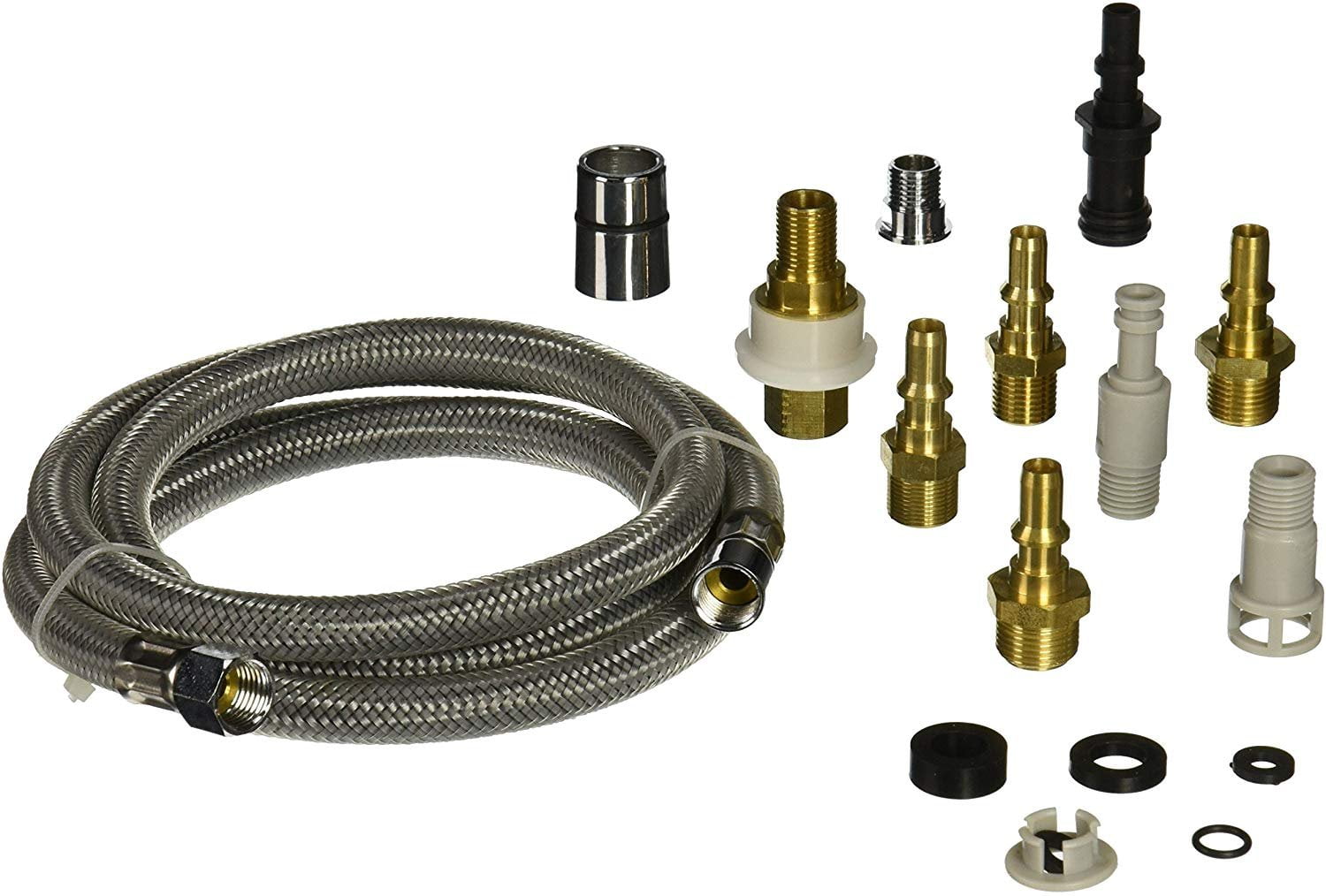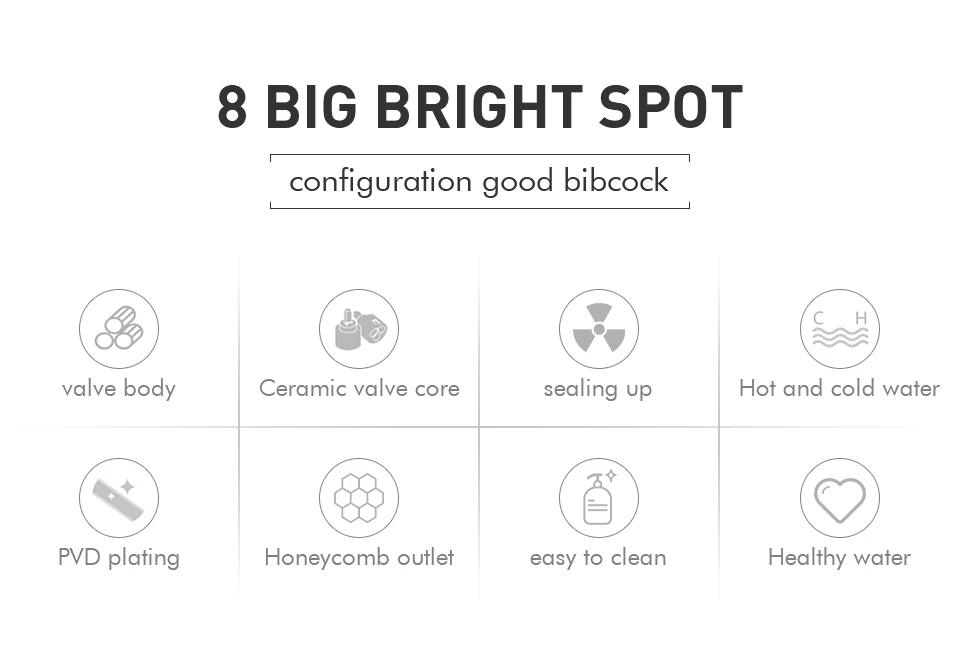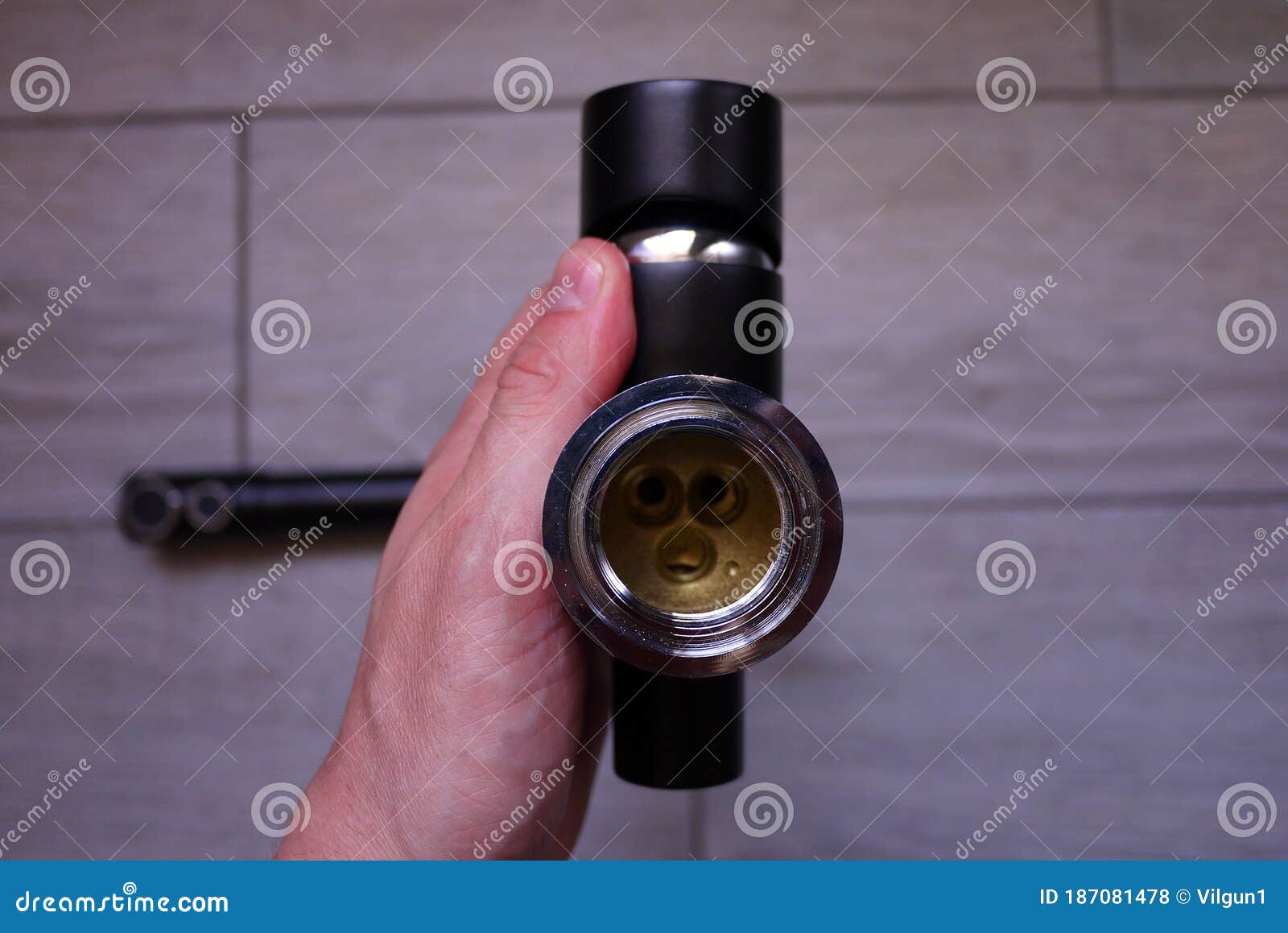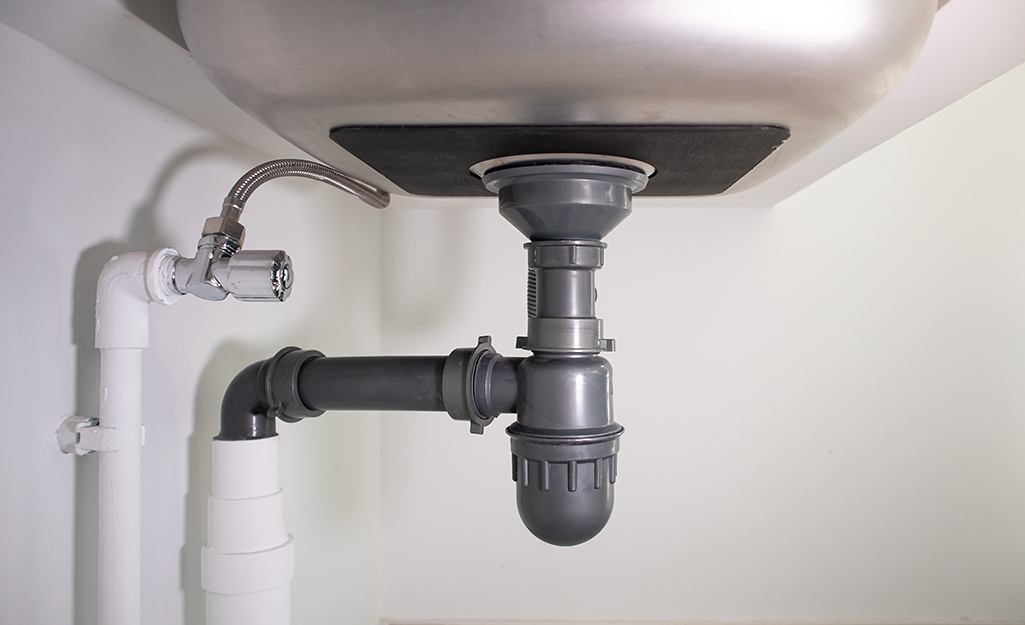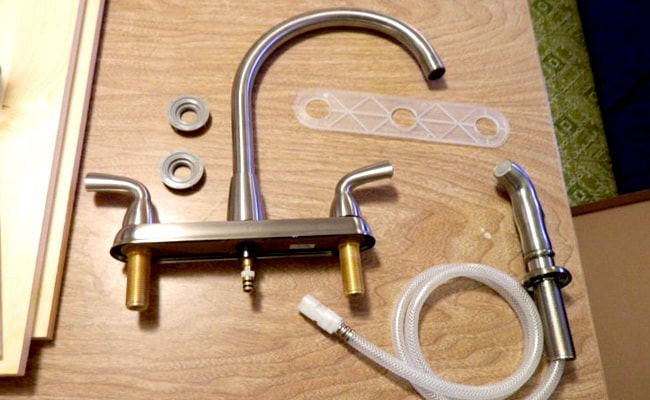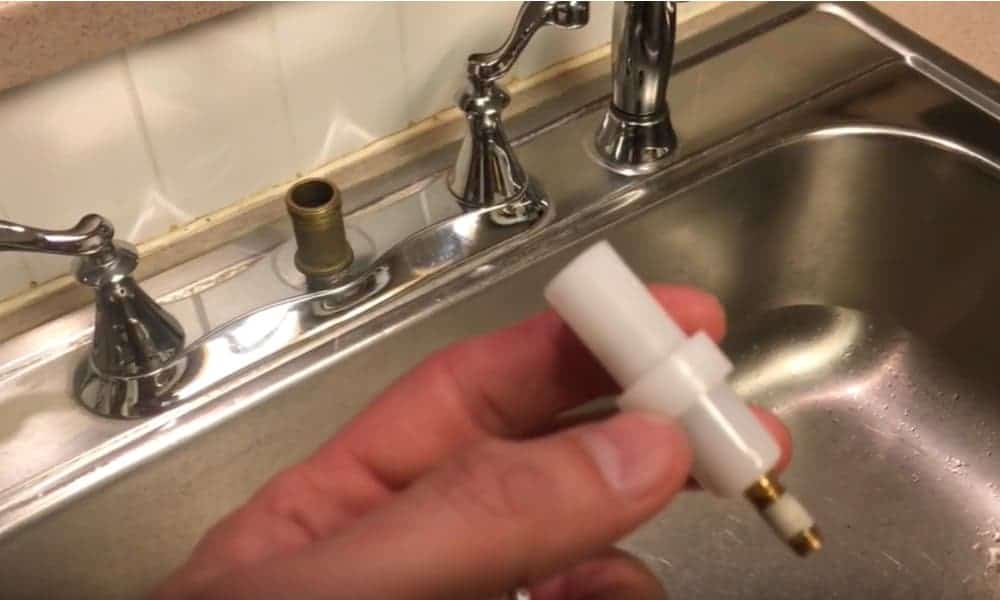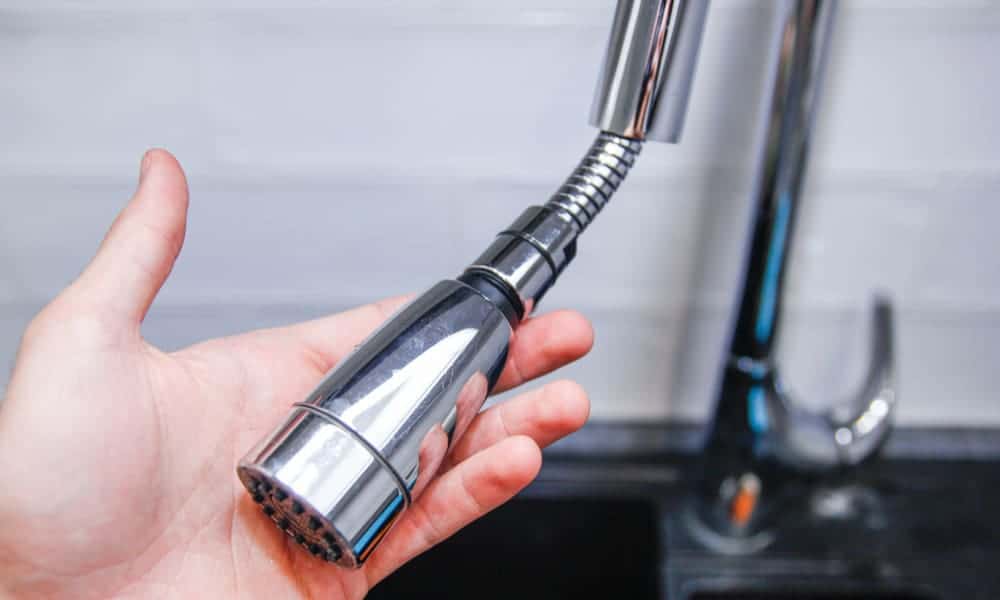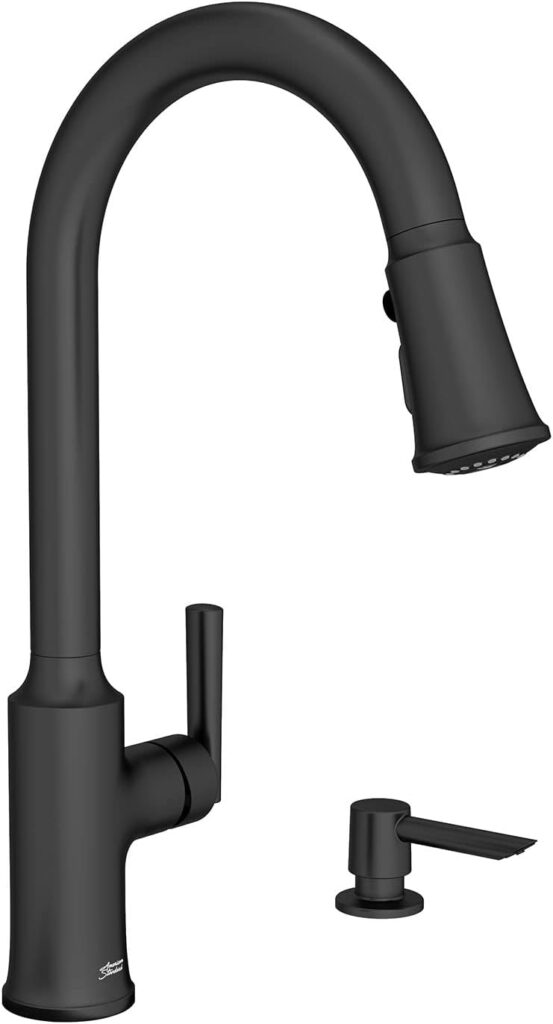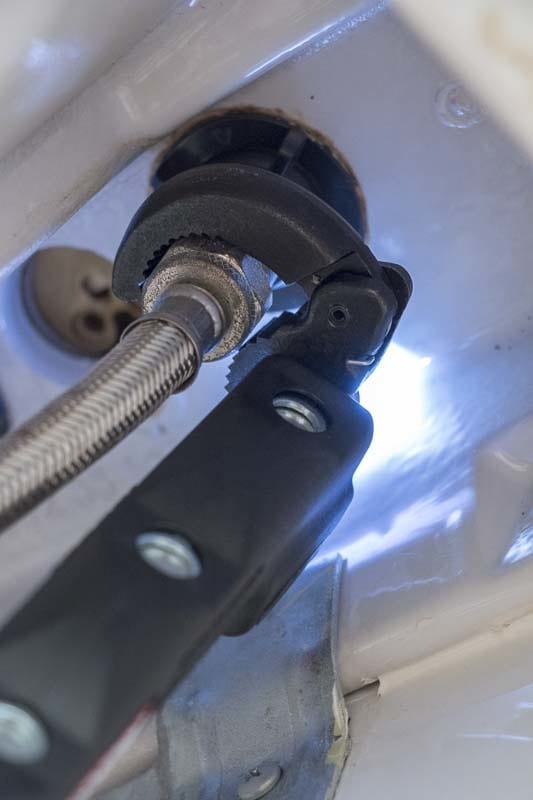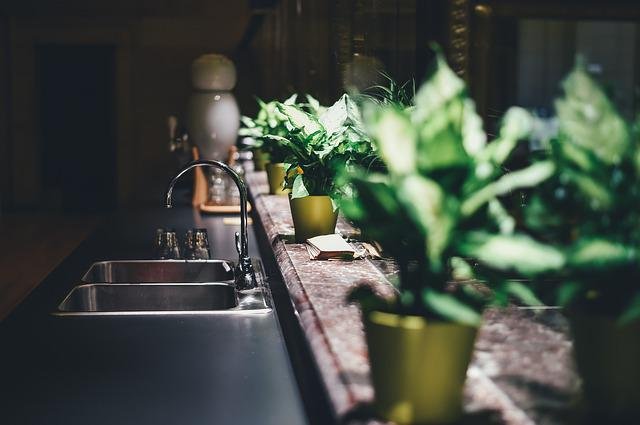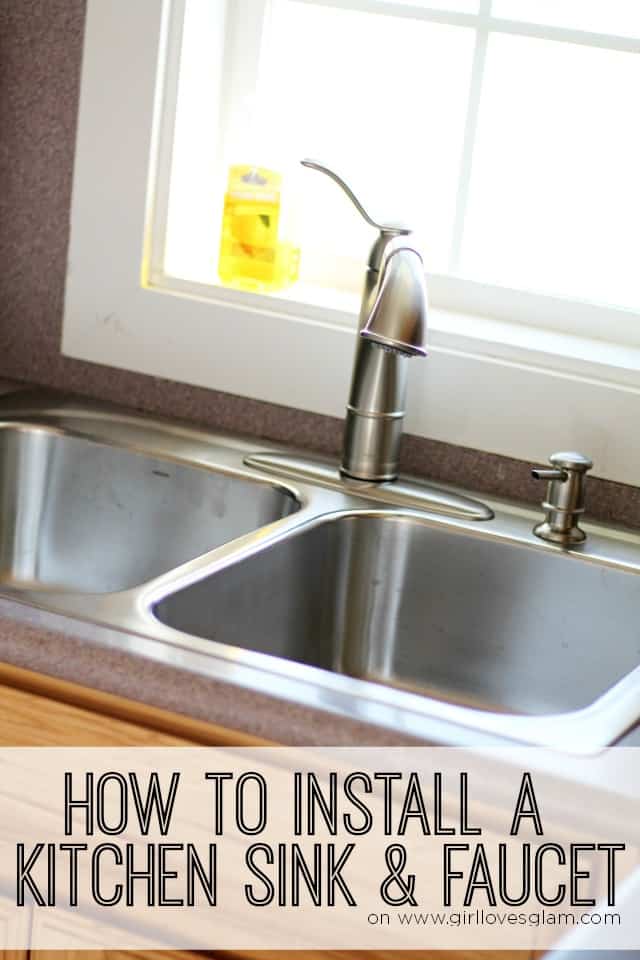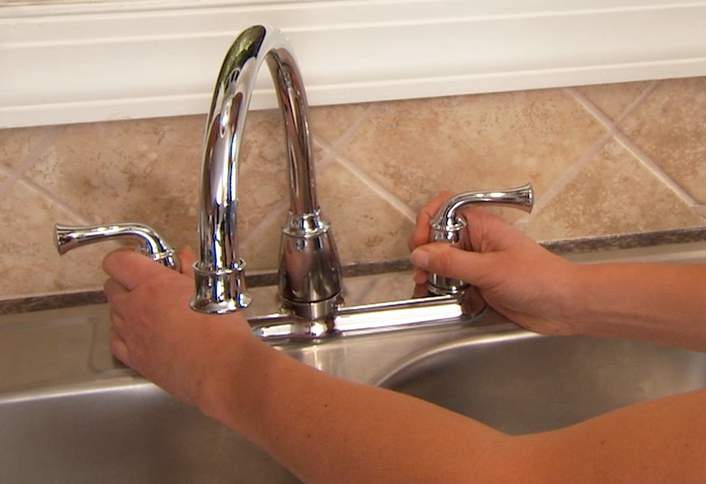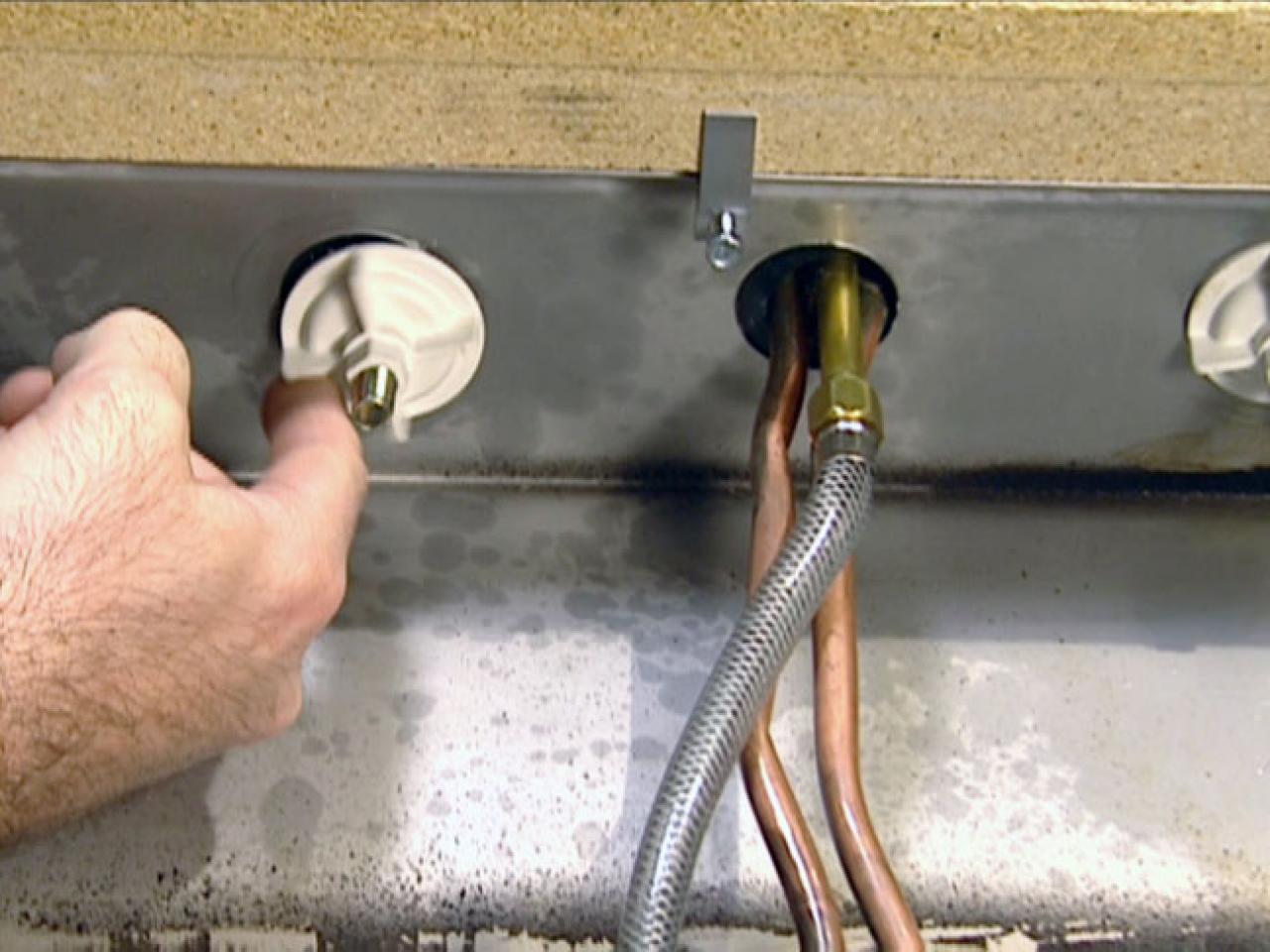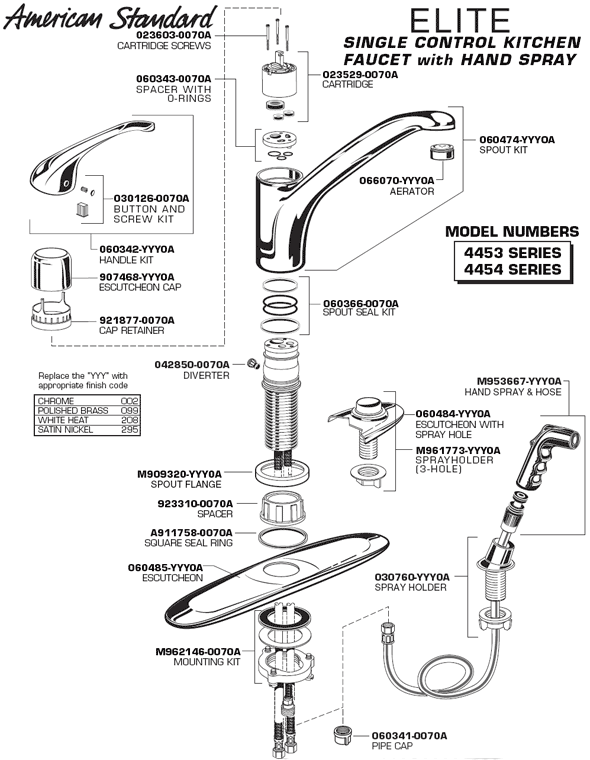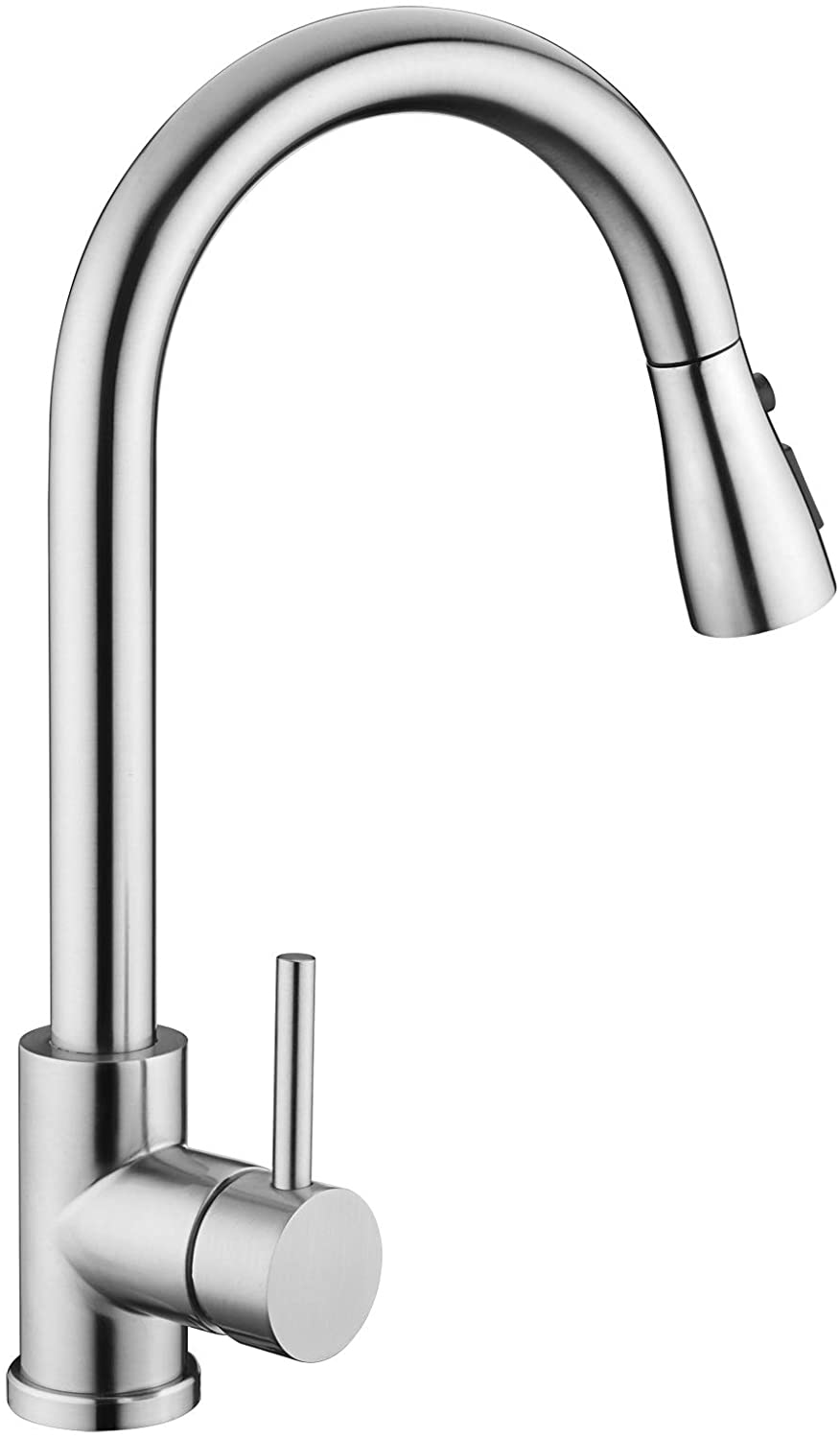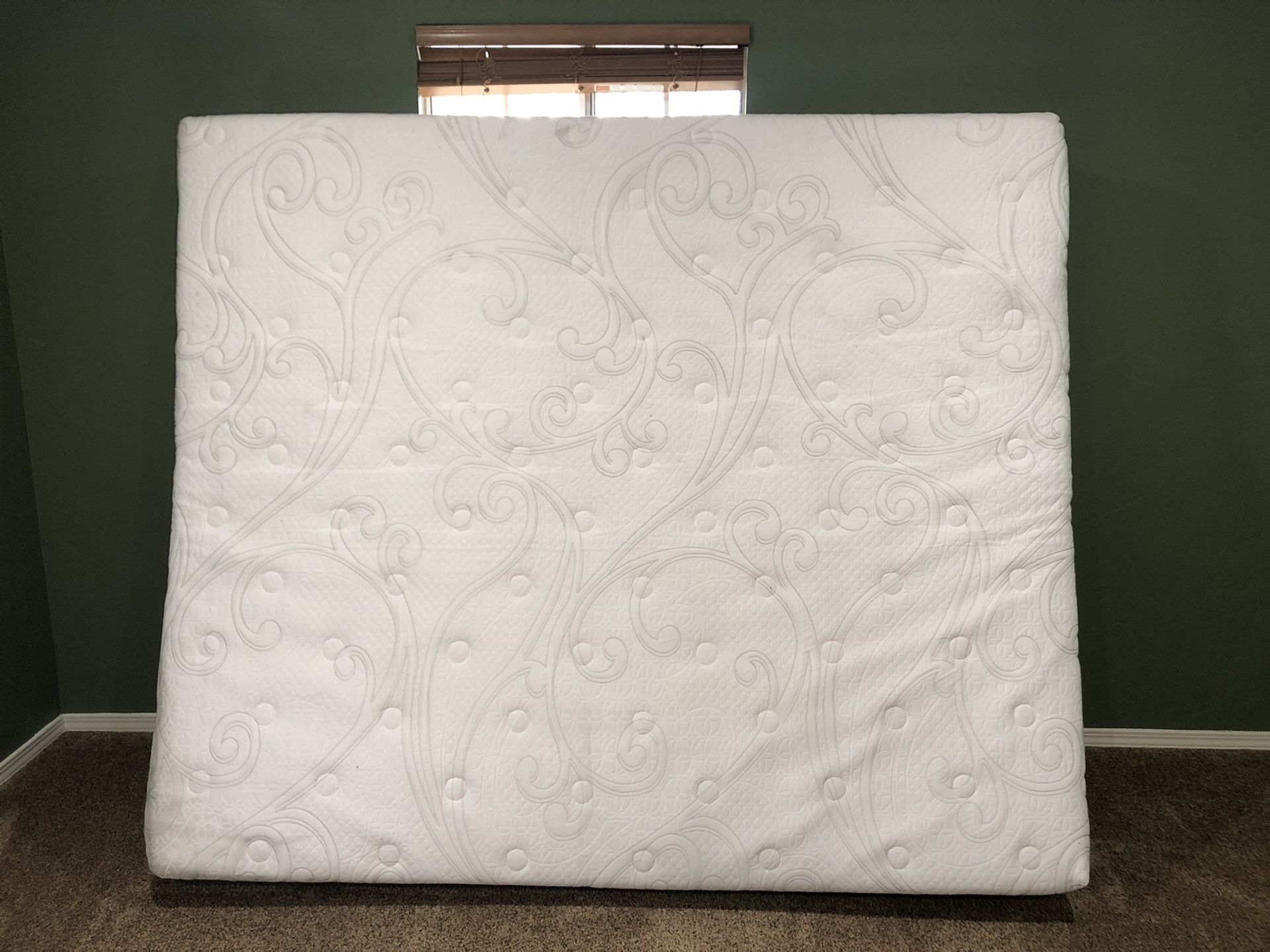Connecting a kitchen sink faucet may seem like a daunting task, but with the right tools and knowledge, it can be a simple and straightforward process. Whether you're replacing an old faucet or installing a new one, this step-by-step guide will walk you through the process and give you tips for a successful installation.How to Connect a Kitchen Sink Faucet
Before you begin, make sure you have all the necessary tools and materials. You will need an adjustable wrench, screwdriver, plumber's putty, Teflon tape, and a new faucet. It's also a good idea to have a bucket or towel handy in case of any water spills. Step 1: Turn off the water supply to your sink by closing the shutoff valves under the sink. Step 2: Disconnect the old faucet by unscrewing the supply lines and removing any mounting nuts or clips. If the old faucet is stuck, you may need to use a basin wrench to loosen it. Step 3: Clean the area around the sink where the new faucet will be installed. Use a mild cleaner and make sure it is completely dry before proceeding. Step 4: Apply plumber's putty to the base of the new faucet. This will create a watertight seal between the faucet and the sink. Step 5: Insert the new faucet through the holes in the sink and secure it with mounting nuts or clips. Use a screwdriver or wrench to tighten them. Step 6: Connect the supply lines to the faucet. Use Teflon tape on the threads to prevent any leaks. Step 7: Turn the water supply back on and check for any leaks. If there are no leaks, you can proceed to test the faucet by turning it on and off.Step-by-Step Guide for Connecting a Kitchen Sink Faucet
As mentioned before, you will need an adjustable wrench, screwdriver, plumber's putty, Teflon tape, and a new faucet. It's also a good idea to have a bucket or towel on hand in case of any water spills. In addition, you may also need a basin wrench if the old faucet is difficult to remove.Tools and Materials Needed for Connecting a Kitchen Sink Faucet
One common issue when connecting a kitchen sink faucet is leaks. This can be caused by incorrect installation or damaged supply lines. Make sure to carefully follow the manufacturer's instructions and use Teflon tape to prevent leaks. Another issue could be low water pressure, which can be caused by a clogged aerator. To fix this, simply remove the aerator and clean it with vinegar and water.Common Problems When Connecting a Kitchen Sink Faucet
Here are some tips to help ensure a successful installation:Tips for Successfully Connecting a Kitchen Sink Faucet
If you prefer a visual guide, there are many helpful video tutorials available online that can walk you through the process of connecting a kitchen sink faucet. Make sure to choose a video from a reputable source and follow the steps carefully.Video Tutorial: Connecting a Kitchen Sink Faucet
It's important to note that the process of connecting a kitchen sink faucet may differ slightly depending on the type and brand of faucet you are installing. It's always best to refer to the manufacturer's instructions for specific guidance. Additionally, if you are uncomfortable with DIY projects or encounter any difficulties during the installation, it's best to seek professional help.Connecting a Kitchen Sink Faucet: What You Need to Know
The steps for installing a kitchen sink faucet are essentially the same as connecting one. However, if you are installing a new sink and faucet, you will need to follow the manufacturer's instructions for mounting the sink as well. Note: If you are not experienced with plumbing, it's recommended to hire a professional for installing a new sink and faucet to ensure proper connections and prevent any potential issues in the future.How to Install a Kitchen Sink Faucet
To summarize, here are the step-by-step instructions for connecting a kitchen sink faucet:Connecting a Kitchen Sink Faucet: Step-by-Step Instructions
If you encounter any issues during the installation process or notice leaks after completing the installation, refer to the manufacturer's instructions for troubleshooting tips. You can also contact their customer service for further assistance. In conclusion, connecting a kitchen sink faucet may seem daunting, but with the right tools, knowledge, and patience, it can be a simple and successful DIY project. Use this guide to help you through the process and enjoy your new faucet in no time!Troubleshooting Guide for Connecting a Kitchen Sink Faucet
Why a Properly Connected Kitchen Sink Faucet is Essential for Your House Design

The Importance of a Kitchen Sink Faucet in Your House
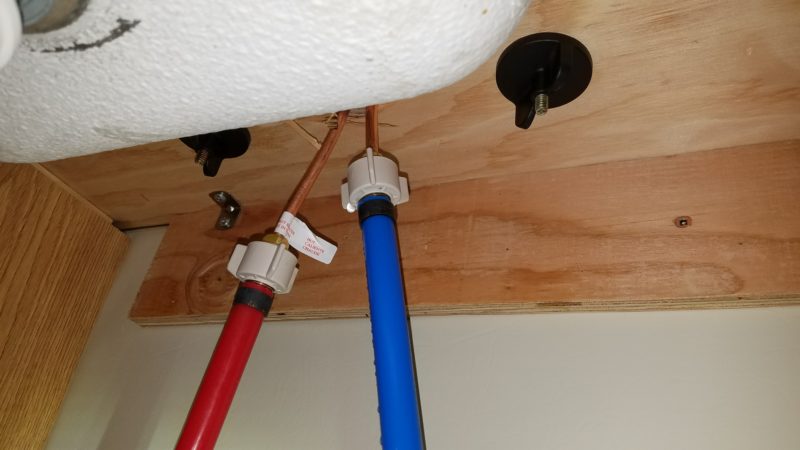 A kitchen sink is an essential element in any house design, and a properly connected
kitchen sink faucet
plays a crucial role in its functionality. A
faucet
is not just a simple water dispenser; it is a key component in your kitchen that can enhance the overall aesthetic and functionality of the space. It is used for various tasks such as washing dishes, filling pots, and even cleaning fruits and vegetables. Therefore, it is essential to ensure that your
kitchen sink faucet
is properly connected to avoid any inconvenience or damage to your kitchen.
A kitchen sink is an essential element in any house design, and a properly connected
kitchen sink faucet
plays a crucial role in its functionality. A
faucet
is not just a simple water dispenser; it is a key component in your kitchen that can enhance the overall aesthetic and functionality of the space. It is used for various tasks such as washing dishes, filling pots, and even cleaning fruits and vegetables. Therefore, it is essential to ensure that your
kitchen sink faucet
is properly connected to avoid any inconvenience or damage to your kitchen.
The Process of Connecting a Kitchen Sink Faucet
 Connecting a
kitchen sink faucet
may seem like a daunting task, but with the right tools and instructions, it can be a simple and straightforward process. The first step is to gather all the necessary tools and materials, including a
faucet
wrench, plumber's tape, and a bucket to catch any water. Next, you need to turn off the main water supply and drain any remaining water from the pipes. Then, carefully remove the old
faucet
and clean the sink surface to ensure a smooth installation.
Connecting a
kitchen sink faucet
may seem like a daunting task, but with the right tools and instructions, it can be a simple and straightforward process. The first step is to gather all the necessary tools and materials, including a
faucet
wrench, plumber's tape, and a bucket to catch any water. Next, you need to turn off the main water supply and drain any remaining water from the pipes. Then, carefully remove the old
faucet
and clean the sink surface to ensure a smooth installation.
The Benefits of a Properly Connected Kitchen Sink Faucet
 A properly connected
kitchen sink faucet
can bring several benefits to your house design. Firstly, it can enhance the overall look of your kitchen, as there are various
faucet
designs and finishes to choose from that can complement your kitchen's style. Secondly, it can improve the functionality of your kitchen, as a
faucet
with a pull-out spray or touchless feature can make tasks more convenient and efficient. Lastly, a properly connected
kitchen sink faucet
can prevent any water leaks or damage to your kitchen, saving you time and money in the long run.
A properly connected
kitchen sink faucet
can bring several benefits to your house design. Firstly, it can enhance the overall look of your kitchen, as there are various
faucet
designs and finishes to choose from that can complement your kitchen's style. Secondly, it can improve the functionality of your kitchen, as a
faucet
with a pull-out spray or touchless feature can make tasks more convenient and efficient. Lastly, a properly connected
kitchen sink faucet
can prevent any water leaks or damage to your kitchen, saving you time and money in the long run.
In Conclusion
 In conclusion, a properly connected
kitchen sink faucet
is essential for your house design. It not only adds to the aesthetic appeal of your kitchen but also plays a vital role in its functionality. With the proper tools and instructions, connecting a
faucet
can be a simple and rewarding process. So, make sure to invest in a high-quality
kitchen sink faucet
and properly connect it to enjoy its benefits for years to come.
HTML Code:
In conclusion, a properly connected
kitchen sink faucet
is essential for your house design. It not only adds to the aesthetic appeal of your kitchen but also plays a vital role in its functionality. With the proper tools and instructions, connecting a
faucet
can be a simple and rewarding process. So, make sure to invest in a high-quality
kitchen sink faucet
and properly connect it to enjoy its benefits for years to come.
HTML Code:
Why a Properly Connected Kitchen Sink Faucet is Essential for Your House Design
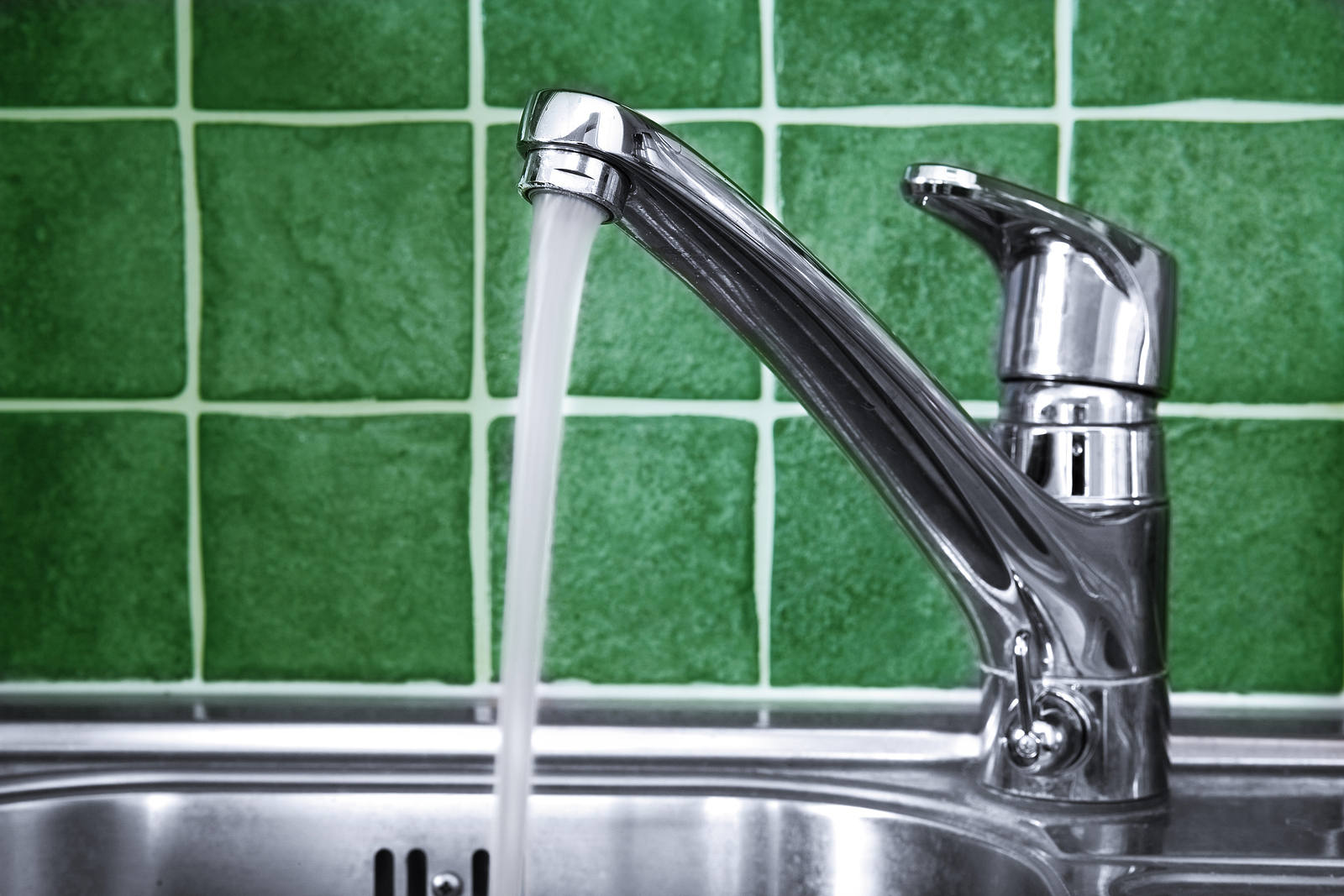
The Importance of a Kitchen Sink Faucet in Your House

A kitchen sink is an essential element in any house design, and a properly connected kitchen sink faucet plays a crucial role in its functionality. A faucet is not just a simple water dispenser; it is a key component in your kitchen that can enhance the overall aesthetic and functionality of the space. It is used for various tasks such as washing dishes, filling pots, and even cleaning fruits and vegetables. Therefore, it is essential to ensure that your kitchen sink faucet is properly connected to avoid any inconvenience or damage to your kitchen.
The Process of Connecting a Kitchen Sink Faucet

Connecting a kitchen sink faucet may seem like a daunting task, but with the right tools and instructions, it can be a simple and straightforward process. The first step is to gather all the necessary tools and materials, including a faucet wrench, plumber's tape, and a bucket to catch any water. Next, you need to turn off the main water supply and drain any remaining water from the pipes. Then, carefully remove the old faucet and clean the sink surface to ensure a smooth installation.
The Benefits of a Properly Connected Kitchen Sink Faucet
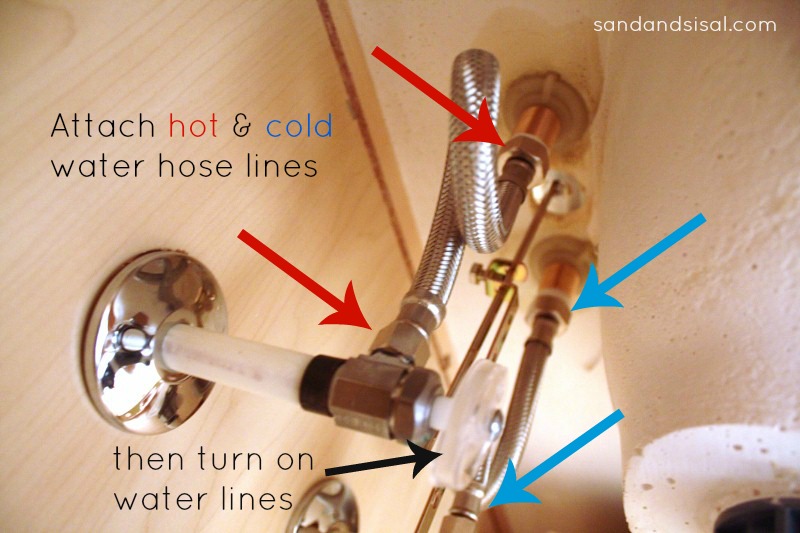
A properly connected kitchen sink faucet can bring several benefits to your house design. Firstly, it can enhance the overall look of your kitchen, as there are various faucet designs and finishes to choose from that can complement your kitchen's style. Secondly, it can improve the functionality of your kitchen, as a faucet with a pull-out spray or touchless feature can make tasks more convenient and efficient. Lastly, a properly connected kitchen sink faucet can prevent







